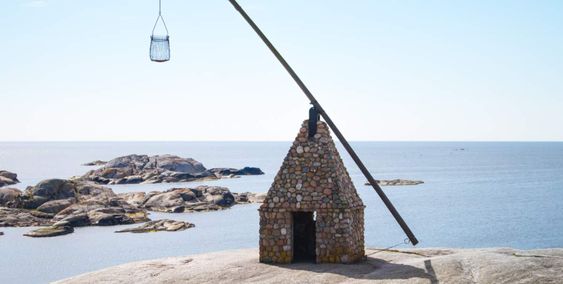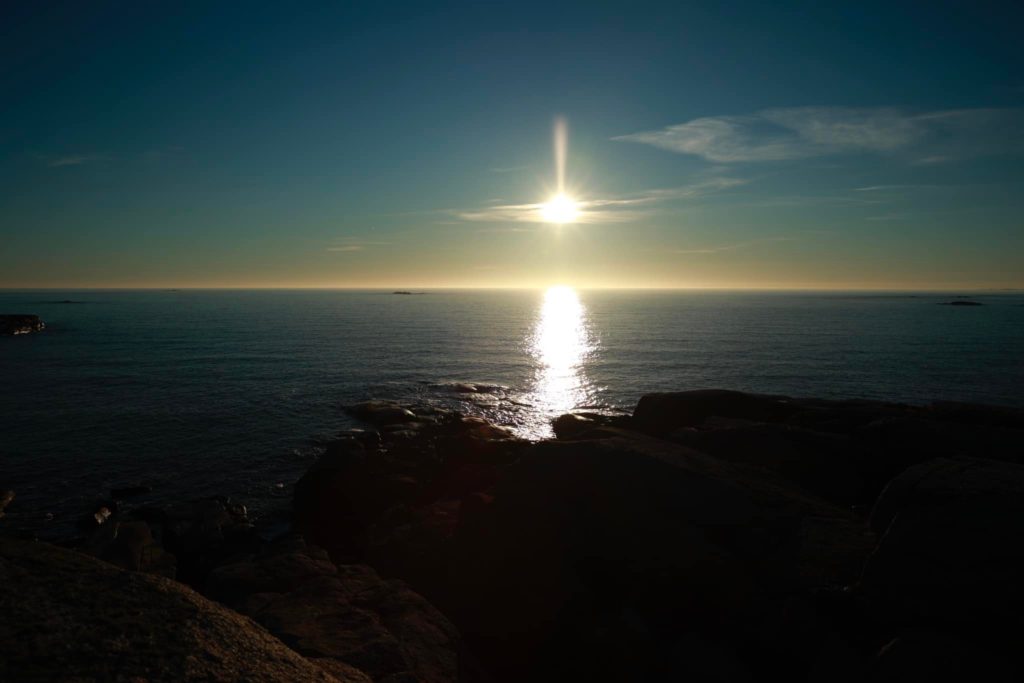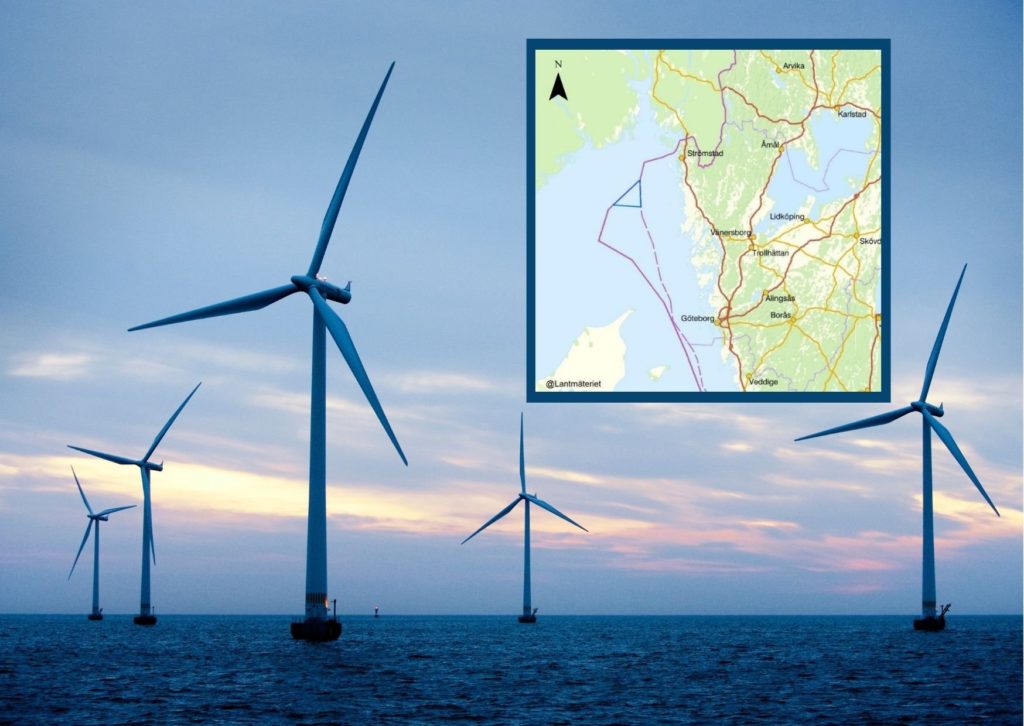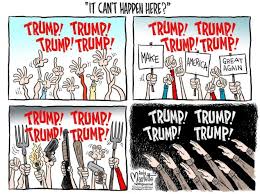
Verdens Ende (World’s End) on the southern tip of Tjøme is probably best known for “Vippefyret”
– the lighthouse, made of stones from the local beaches. The lighthouse is a replica that was built in 1932. The Færder National Park Center opened in June 2015 located at the southernmost tip of the island of Tjøme in Færder municipality, Norway.
A fantastic recreation area composed of various islets, rocks, fishing spots, and skerries it is one of the most popular scenic spots in the area due to the almost 360-degree panoramic view of the Skagerak. The area has excellent conditions for swimming, fishing, and hiking. Wikipedia

This is the beautiful view from the World’s End towards the Skagerak. Both photos by Ida K. B
Off the Færder coast between Norway and Sweden, a huge offshore wind farm is now being planned that will be clearly visible from several places in Østfold, Vestfold, and Telemark.
They want to build an offshore wind farm near the border of a national park. It is not even allowed to fly a drone here for the sake of wildlife(!). It is an area with rich birdlife. National parks are to be areas that are extra protected and protected from encroachment on nature, but what does it mean if the wind industry is built right outside? And wind turbines are also known for their great threat to birdlife.


The picture shows Lillgrund Wind Farm outside Skåne. The map section shows where the «Vidar wind farm» is planned.
Photo: NTB / Lantmäteriet
OPINION by Christina Fjeldavli, board member of La Naturen Leve, Tønsberg
The offshore wind project just outside Færder National Park has been named “Vidar wind farm” is now being planned in the northern part of the Skagerak, between Sweden and Norway.
[Vidar – mythological son of Odin, powerful and mute – sounds cute for a wind farm]
If the project is not stopped, the famous 360-degree view from Worlds End in Færder would be giant wind turbines at day, and a monstrous red blinking nightmare at night, a nature-destroying facility in the outskirts of a National Park.
The wind power company Zephyr AS, which is owned by Østfold Energi (50%), Vardar, and Glitre Energi, has distinguished itself with several very controversial projects on land. Zephyr’s Swedish subsidiary, Zephyr Vind AB, will now cover 201 square kilometers of the northern Skagerak with 340-meter high wind turbines, 66 of them. Alternatively, it envisages installing 91 turbines that will rise 260 meters into the air. Do you think it seems like a bad idea to disturb all of life in an area the size of Tønsberg municipality multiplied by two?
If so, you could have a saying via the Norwegian Environment Agency’s website, both private individuals and companies can send consultation responses.
AquaBiota is offering assistance in court
No complete impact assessment for “Vidar wind farm” is currently available, but the research and consulting company AquaBiota has prepared a report entitled “Consultation documentation”, dated 28 October. Here you are informed about technical and practical details.
In addition, a superficial discussion of nature conservation considerations is presented, where the conclusion seems to have been given in advance. According to its own website, AquaBiota offers to help wind power companies with the argument in a meeting with the authorities. AquaBiota will also be “participating in consultations, court proceedings, etc.”. How neutral are you as a professional body if you are already in the beginning, before you have knowledge of the project in question, offering assistance in court?
The “Consultation Document” for AquaBiota mentions several bird species that have been registered where the “Vidar wind farm” will now be built, including osprey, sturgeon, gray gull, guillemot, auks, and king of auks. It is emphasized that in the North Sea it has been possible to observe a general increase among most seabird species. For all functional groups (grazing, benthic, and fishing seabirds), the populations have increased », the report states. Is this a kind of covert argument where the intention is to de-dramatize an upcoming decline in bird populations as a result of the development? In Norway, gray gulls and auks are considered vulnerable species. Guillemots are considered critically endangered (Species Data Bank, 2021).
Destroys the fundamental basis for life
The “Consultation document” has a separate section on marine mammals. Here porpoises, harbor seals, and harbor seals are mentioned in particular. These are species that are registered in the project area or close by. The harbor seal is considered a vulnerable species, and the harbor seal is registered as near endangered in the Species Data Bank (2021). It is informed about a porpoise population that lives within the project area: “Within the project area, there is the Skagerrak population, which is part of the North Sea population.” How a porpoise will be able to react to 260-340 meter high wind turbines is not commented on. Porpoise is today considered viable, but there should be no argument for destroying the livelihood of a population. According to AquaBiota, the project area is rich in fish. Herring, cod, saithe, haddock, mackerel, and pike are among the many fish species mentioned in the “Consultation Document”. We do not know for sure how audible noise and infrastructure could affect the fish’s ability to orient themselves.
What we do know is that offshore wind farms can make fishing completely impossible. It is not uncommon for us to see this used as an argument for wind power development, as a kind of environmental argument. It is true that overfishing can be a problem, but should the answer be to make fishing completely impossible? Both bottomless and floating offshore wind can “damage the flora and fauna on the seabed, including fish species that live and spawn there”, both in the installation phase and in the operational phase. Wind turbine noise can “disrupt communication between marine organisms that, for example, use sound during spawning”, according to the Institute of Marine Research (2020).
Nature is destroyed
Unfortunately, it is not possible to assess the consequences away from nature’s destruction. The claim that wind power is emission-free, renewable, and “green” is no longer true simply because it is constantly repeated. “In summary, it seems completely unlikely that offshore wind will cause less global pollution than new gas turbines on the Norwegian shelf when extraction of materials, production and installation are included in the calculation together with operation and removal of the facilities. Wind power kills birds, releases microplastics to nature and the consequences of the noise for life in the sea are still unknown “, warns civil engineer Tor Eriksen (Tekna, 21.09.21).
In Norway, both the Prime Minister and the Minister of Climate and the Environment dream of an «industrial adventure with offshore wind turbines». We do not have a nature conservation ministry, and consequently, no nature conservation minister who can speak for nature. Maybe it is now “ordinary people’s turn” to show that enough is enough? Or should we sit still and watch 201 square kilometers of nature being destroyed before our eyes?




40 Comments
Pingback: สล็อตเว็บตรง 2023
Pingback: สล็อต xo
Pingback: LSM99 ฝาก-ถอน ออโต้
Pingback: dragongaming
Pingback: สล็อตเว็บตรง
Pingback: motorsport
Pingback: สล็อตวอเลท ไม่มีขั้นต่ำ
Pingback: Click to learn
Pingback: buy cvv
Pingback: Public Health Degree in Africa
Pingback: Payday Loans Gordon
Pingback: pouches
Pingback: yehyeh.com
Pingback: buy botox without a license
Pingback: สล็อต
Pingback: jelly donut oreos
Pingback: ทีเด็ดฟุตบอล
Pingback: u31 com
Pingback: https://lithub.sk/2022/07/17/ahoj-svet/
Pingback: white berry strain for sale
Pingback: BAUC
Pingback: Ks Quik
Pingback: trustbet
Pingback: Empire777 ฟรี 300
Pingback: pg betflik
Pingback: บริการรับจด อย
Pingback: pg slot เว็บตรง
Pingback: บริษัทรับทำเว็บไซต์
Pingback: ยอย coupling
Pingback: สอนสัก
Pingback: SHOPEE สล็อต
Pingback: สล็อต888 เว็บตรง วอเลท
Pingback: เช่ารถตู้พร้อมคนขับ
Pingback: Aviation Tire
Pingback: Aviator Game
Pingback: casino online gr
Pingback: klassiske spilleautomater
Pingback: lotto191s
Pingback: ออกแบบโรงแรม
Pingback: league88